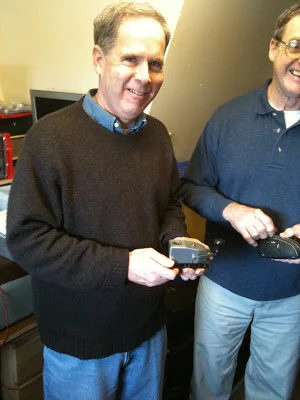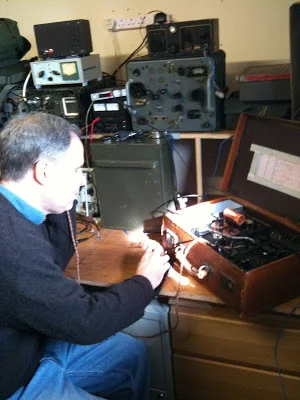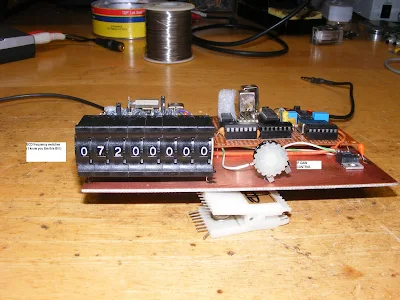SolderSmoke 193 28 Jan 2017
Report from Pete on BITX 40 Session with California radio club.
Update on the BITX40 Module Revolution
-- Check out the BITXHACKS page. Send in contributions.
-- BITX20 mailing list very active.
-- Raduino!
-- Interview with Farhan with W5KUB -- Eliminating the commercial gear.
-- BITX 40s on the beach in Australia. FB
-- Check out the BITXHACKS page. Send in contributions.
-- BITX20 mailing list very active.
-- Raduino!
-- Interview with Farhan with W5KUB -- Eliminating the commercial gear.
-- BITX 40s on the beach in Australia. FB
Bench Reports:
Pete:
-- Color Displays!
-- KWM-4
-- OLED MADNESS!
-- Color Displays!
-- KWM-4
-- OLED MADNESS!
Bill:
-- Fixing up the old HT-37 HT37 to HT37 QSO with W1ZB
-- Dabbling in VHF with Ramsey Aircraft band receiver. NOT FUN.
-- Going all IC with Si5351 OLED NE602 rig.
-- BANDSWEEP
-- OLED Noise and the Active Decoupling solution.
-- Fixing up the old HT-37 HT37 to HT37 QSO with W1ZB
-- Dabbling in VHF with Ramsey Aircraft band receiver. NOT FUN.
-- Going all IC with Si5351 OLED NE602 rig.
-- BANDSWEEP
-- OLED Noise and the Active Decoupling solution.
Using LTSPICE as a diagnostic or understanding tool.
Of Waterfalls, Homebrew Rigs and Casual Critics on 40 meters. Words of Wisdom from W8JI.
LEXICON: HAYWIRE TOMBSTONE BIKESHEDDING from Todd K7TFC
Some great recent interviews by Eric 4Z1UG:
Ian G3ROO Origins of ROO Regen at age 8
Hans Summers G0UPL Balloons! NO COMMECIAL GEAR
David White WN5Y ELECTROLUMINESCENT RECEIVER EXPLAINED
Rob Sherwood NC0B
Ian G3ROO Origins of ROO Regen at age 8
Hans Summers G0UPL Balloons! NO COMMECIAL GEAR
David White WN5Y ELECTROLUMINESCENT RECEIVER EXPLAINED
Rob Sherwood NC0B
MAILBAG:
Chris KD4PBJ's BITX 40 with improved stability
Jerry W0PWE built a DIGITIA! Very nice. Worked Keith N6ORS and heard me! TRGHS
Mike AB1YK's Al Fresco Scratch built BITX. But give that LC VFO another chance Mike!
Steve N8NM 30 meter rig with salvaged CB LC VFO. FB
Keith N6ORS Franken SDR rig with parts from the 1980s. FB
SKN Bandscan from Mike WA6ARA I worked W1PID Jim!
What is Mikele up to?
Rocking Johannesburg and Kirghizstan via local repeaters:
Jerry W0PWE built a DIGITIA! Very nice. Worked Keith N6ORS and heard me! TRGHS
Mike AB1YK's Al Fresco Scratch built BITX. But give that LC VFO another chance Mike!
Steve N8NM 30 meter rig with salvaged CB LC VFO. FB
Keith N6ORS Franken SDR rig with parts from the 1980s. FB
SKN Bandscan from Mike WA6ARA I worked W1PID Jim!
What is Mikele up to?
Rocking Johannesburg and Kirghizstan via local repeaters:

























































